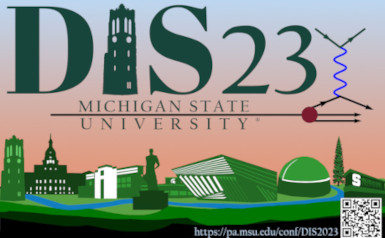Speaker
Description
Baryon number is a strictly conserved quantity in QCD. Conventionally it is assumed to be split between the three valence quarks, but the baryon junction has also been proposed as a way of constructing a gauge-invariant baryon wave function. The baryon junction is a nonperturbative Y-shaped configuration of gluons that is connected to all three valence quarks and carries the baryon number. Baryon number is closely associated with baryon stopping: an excess of baryons compared to antibaryons at midrapidity which is caused by the target nucleons being veered away from the beamline. By definition the junction carries a much lower momentum fraction compared to the valence quarks, and so it has more time to interact with and be stopped by the projectile. In this model the baryon electric charge is still carried by the valence quarks so we can look for evidence of the baryon junction by comparing charge stopping to baryon stopping. This is done with the STAR isobar data set of ${}^{96}_{44}\rm{Ru} + {}^{96}_{44}\rm{Ru}$ and ${}^{96}_{40}\rm{Zr} + {}^{96}_{40}\rm{Zr}$ collisions at $\sqrt{s_{NN}} = 200~\rm{GeV}$ by comparing how the midrapidity net-baryon and net-charge yields change between the two collision species based on the identified particle spectra. Photonuclear collisions occur in heavy-ion collisions when one nucleus emits a quasi-real photon which interacts with the other colliding nucleus, similar to an $e+A$ collision except that the photon tends to have a much lower virtuality. Further supporting the argument for the existence of the baryon junction, significant baryon stopping and rapidity asymmetry are observed at low transverse momentum in semi-inclusive photonuclear processes in $\rm{Au}\rm{+}\rm{Au}$ collisions at $\sqrt{s_{NN}} = 54.4~\rm{GeV}$. These measurements will inform future measurements of identified particles at RHIC and the LHC, as well as measurements in $e+p/A$ collisions at the EIC.
| Submitted on behalf of a Collaboration? | Yes |
|---|




